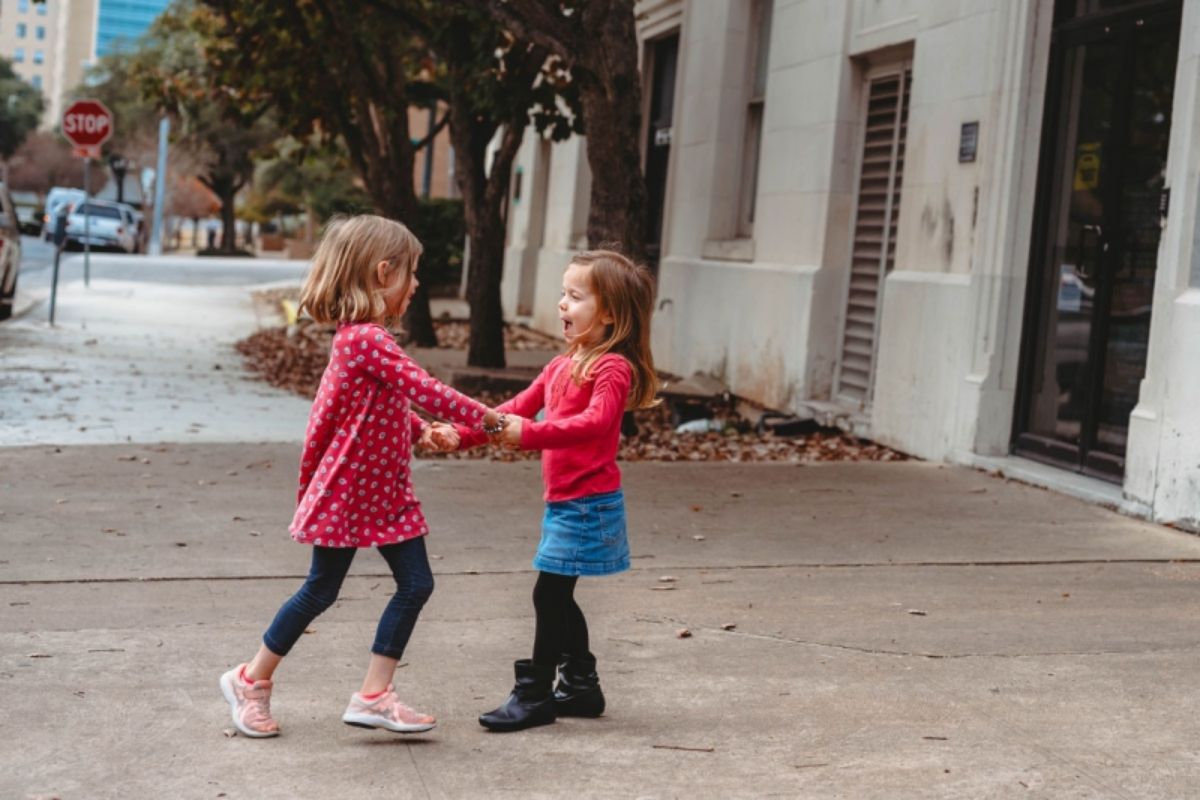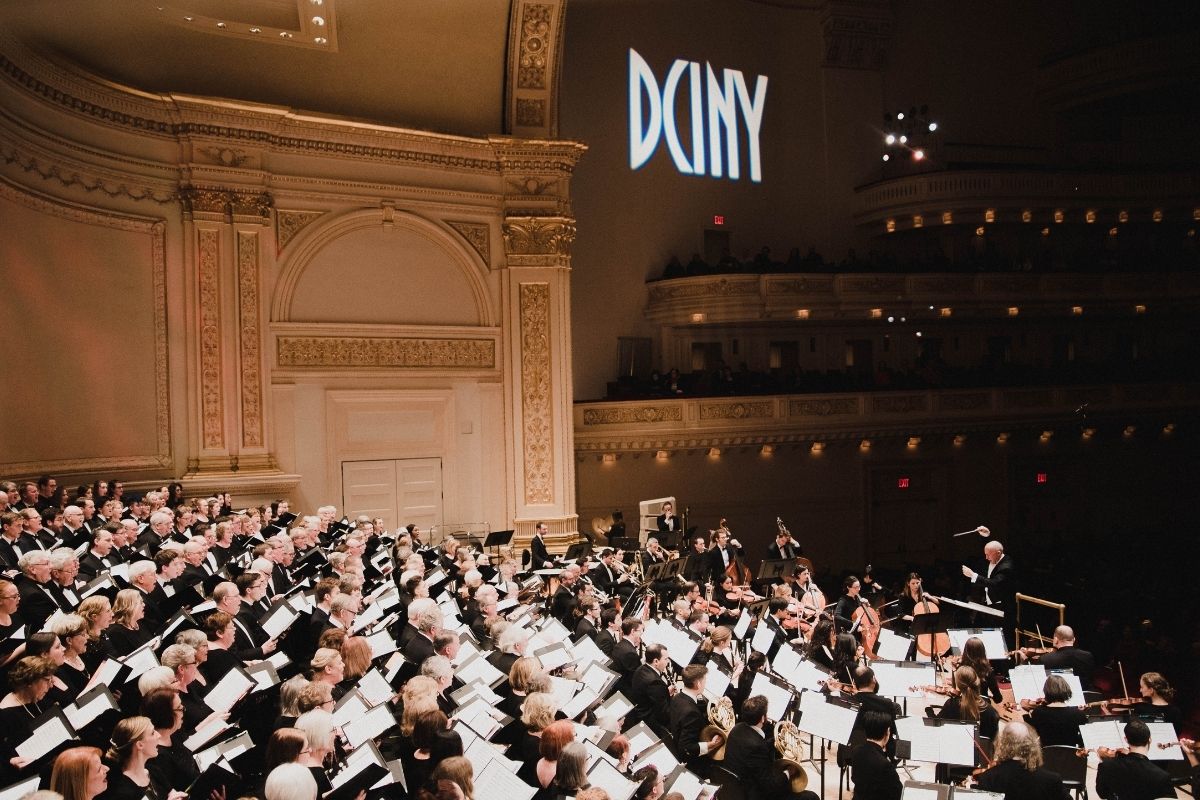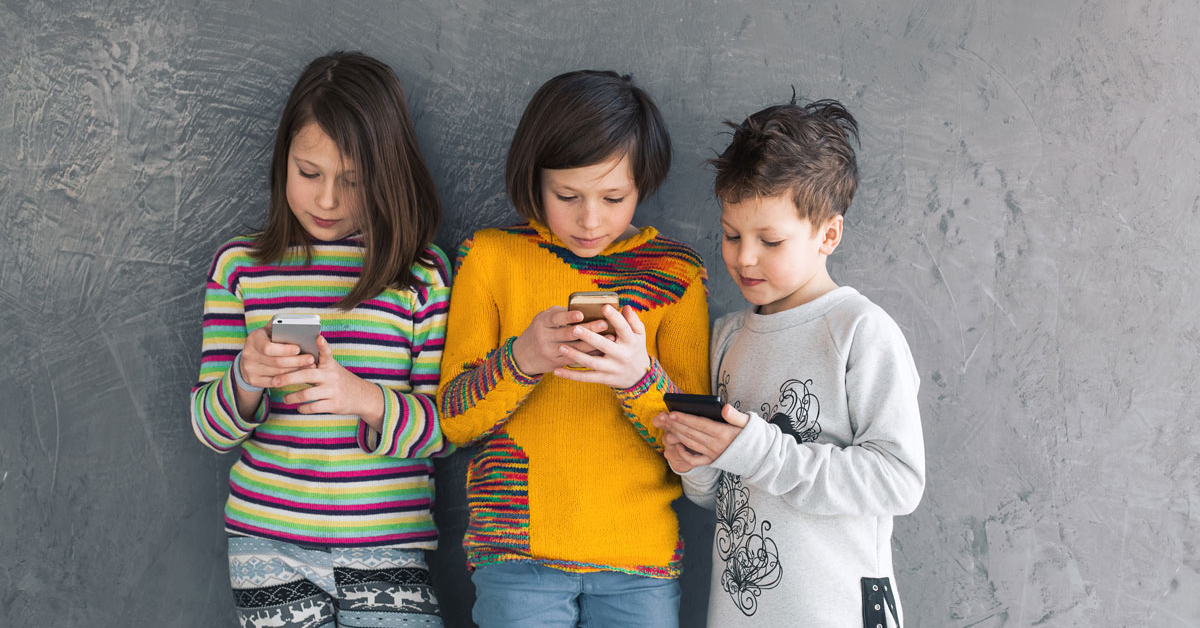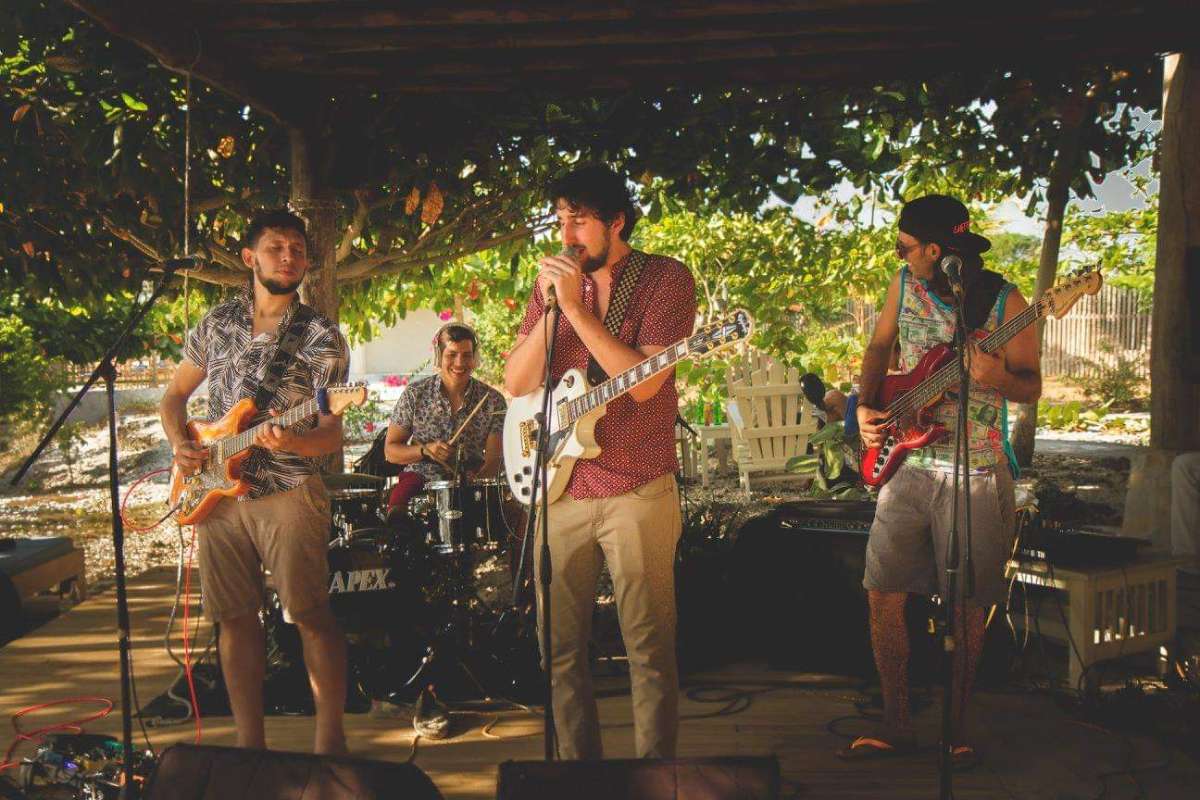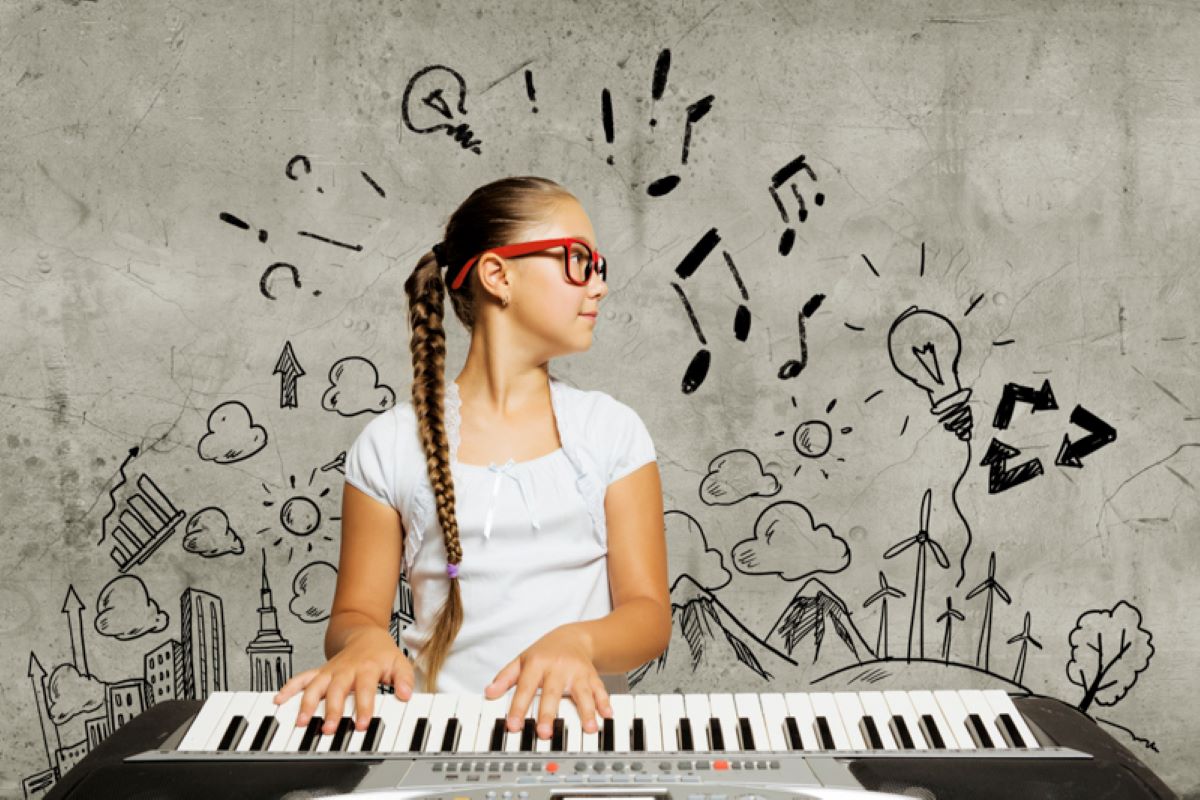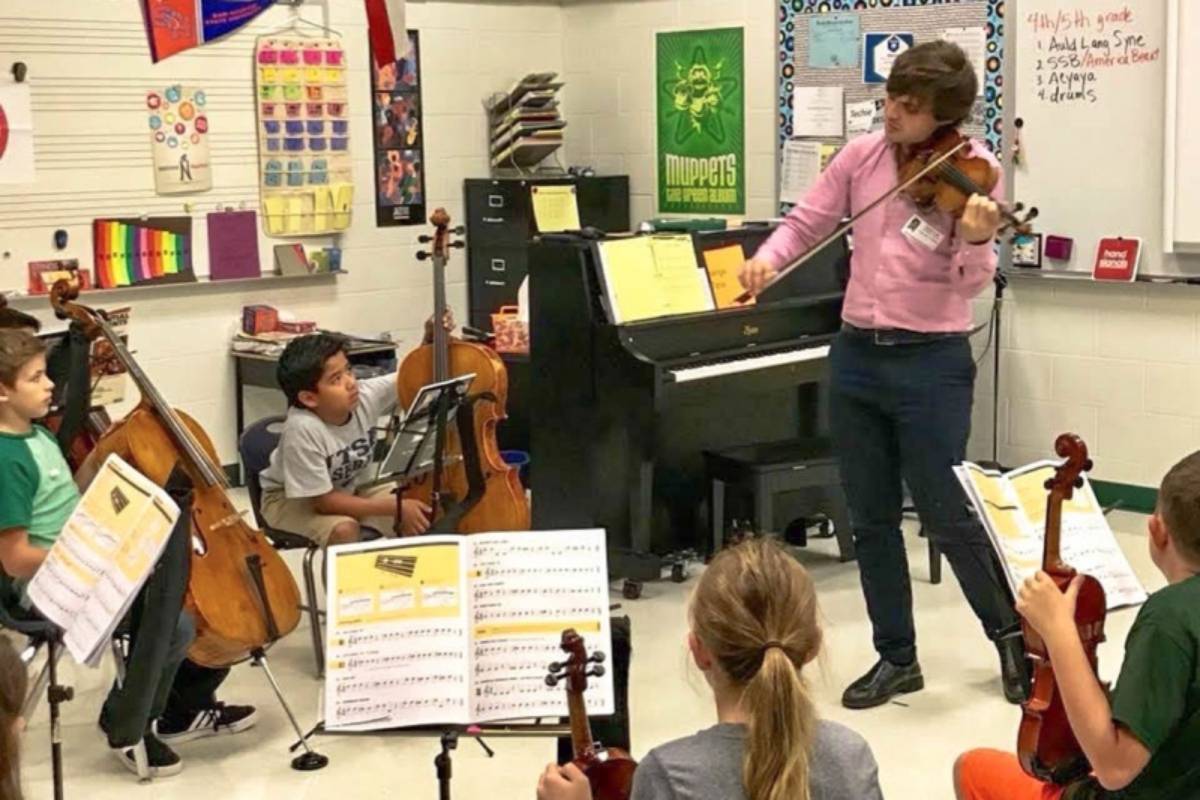Music is for Everyone: Getting Children Engaged in Music Early
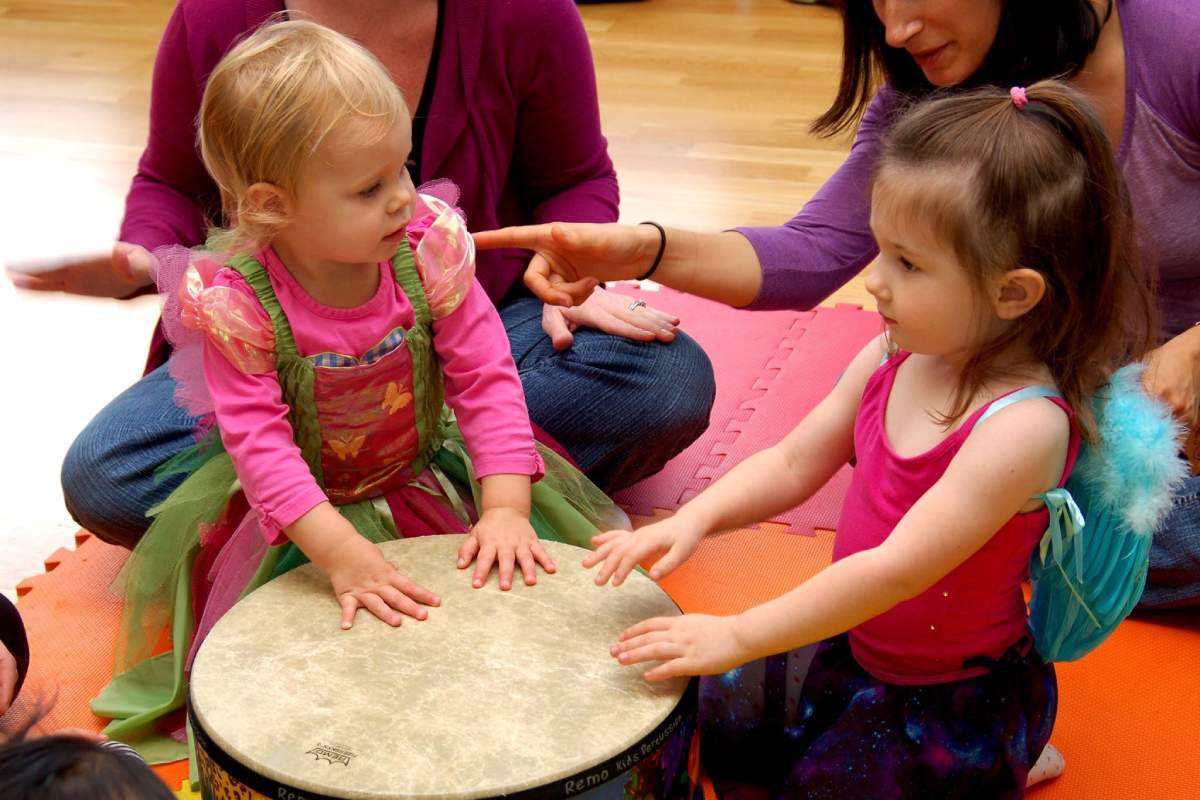
It’s easy to assume that the “Live Music Capital of the World” Austin, Texas – home of the renowned South by Southwest (SXSW) – would have overflowing budgets for music education, but as I looked around my child’s middle school cafeteria one late September evening, I chuckled to myself as I glanced at the folded up lunch tables shoved aside to make room for a half circle of rusted folding chairs. Nothing says “music is valued here” like such a stark and uninspiring environment for students to learn music. Tragically, this is the reality for thousands of schools across America that have had their music program budgets slashed.
Kiddo was almost 10 years old and he had decided to play the double bass so here we were at his first official all-city orchestra lesson. He looked a little worried not seeing any other bass players come in. You could see in the conductor’s smile that having a bass player was a novel occurrence for a beginner orchestra. She looked positively giddy to have him. Watching him as he struggled to keep the bass upright with one untied sneaker hooked on the rungs of his stool and the other swiveling on tip-toe, I decided it was best to browse my phone instead of making matters worse by staring at him nervously.
After a few unsure warm up measures, I thought I recognized the piece and risked a glance over at him. He was sitting and staring patiently at the air in between as the violins went over and over their parts when all the sudden he jerked his head up and flashed me a surprised toothy smile. He did recognize this piece! It was such a great moment. After another 45 minutes of see-sawing their bows through their first orchestra practice, they were finally released to re-case their instruments. I moved quickly to assist with getting the bass back into the case. I should mention again that the double bass is a huge instrument clearly made for adult-sized people and they don’t make a size for nine year old spindly armed video game enthusiasts, so I helicopter-mommed this recasing operation pretty much like a psycho. The bass is so big you have to call audibles to the person on the other side of it lest you both let go at once and send it crashing to the ground. We finished and he smiled up at me excitedly to say “Did you hear it Mom? Silver Canoe! Remember Silver Canoe?” He handed me the sheet music and I thumbed through it as my heart fluttered a bit in my chest. Sure enough, it was Silver Canoe! Aha! He wasn’t learning the piece as much as he was remembering this piece from when he was four years old. We had sung this song a few times a week for months on end in our Music Together class – over five years ago! This music class also marked the beginning of my own music teaching journey.
This Silver Canoe moment, as I have come to call it, was such a special moment as a mom and as a music teacher. I was of course amazed to watch what I teach (and preach if I’m honest) unfold so beautifully and so predictably with my own child. But, it wasn’t just the fact that it made learning the song easier, it was that the song also meant something to him. The song helped him feel like he belonged there. Even though there were no other bass players. Even though there was nobody else from his school. The song created a welcome path for him and not to mention a rush of feel good chemicals. This is the brain’s way of rewarding you when you hear a song you love that is tied to a wonderful memory. It was really remarkable and it surprised even me how easily he handled the rest of this brand new musical situation where he was playing with other musicians for the first time and basically doing a solo everytime he was cued for his part because he was the only bass player. He should have been nervous but amazingly he wasn’t. He should have at least messed up a bit but he really didn’t. It was fun to watch.
What we experienced that day is exactly what I work so hard to make possible at my early childhood music school, tuneBugz! At my mobile music school teachers are passionate about giving all children and parents the keys to music development while it is still fun and easy for both the child and the parent. We teach music the same way that kiddo and I had learned Silver Canoe – under no duress, in fact – under quite joyful circumstances filled with hugs and giggles. We learned the song with him bouncing on my lap (the canoe) and paddling together on the macro beat along with the song. We laughed as we tipped the boat over at the ends of phrases (accenting where those are). We have been teaching this song this way at tuneBugz! for over 10 years. We strive to firmly root the sense of musicality in all children and continue to support children musically up through all ages and stages of early childhood through age five. This seeks to ensure that children emerge from early childhood into early elementary not just fully musically competent but also musically curious and artistically brave.
The good news is, every aspect of early childhood is so well researched that parents literally get handouts from their pediatricians on what delights of development await parents every few months. We know when they should be clapping. When they should be sitting up unassisted. When they will start to speak. When they will crawl and walk. Who says babies don’t come with an instruction manual? The timelines are four to 6=six month windows but we get the whole thing laid out for us. We just need to add music!
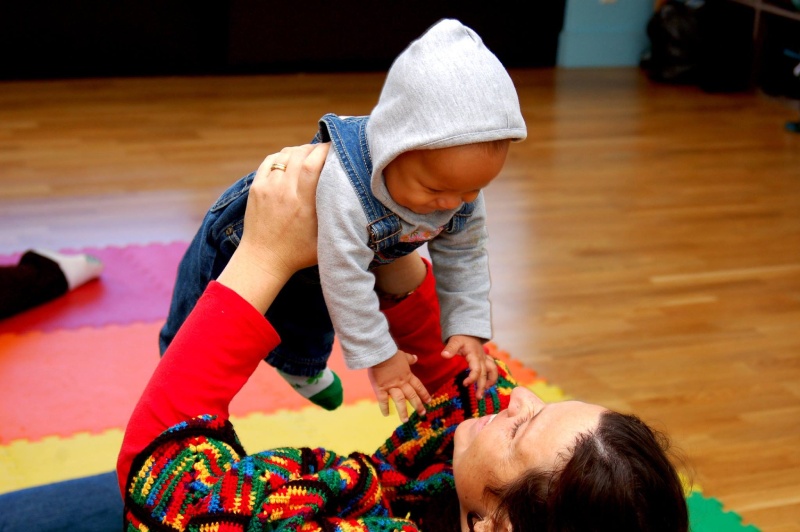
High quality early childhood music programs use a whole child, whole brain approach. They will also rely on growth and development milestones to create developmentally appropriate activities. Understanding how music is processed in the brain and the science of how music skills are acquired in the very young are also key. Music learning is so heavy with science just to have a song like “Row, Row, Row Your Boat” have the desired and of course maximized learning impact but, what the early brain is concerned with is what it sees, what it hears and what their loved one is doing. Your joy is their joy. Early childhood music and movement programs that don’t consider the whole brain and the whole development of the child really miss the depth of learning and how long the music learning can stay with the child.
At tuneBugz!, we teach the Music Together early childhood music education program and follow their learning method for family classes and pre-school. A key differentiator of the Music Together philosophy is that we focus on making music for no other purpose but the joyful feeling of doing it. Doing it for its own sake. The fact that it feels nice and it’s enjoyable and does so with family and community support really changes how deeply the experience is embraced. We also believe that every child can grow up to sing in tune and keep a beat if their environment supports musical growth. Every child has inborn seed capacity for music making but they need a safe and nourishing place to flourish and grow. In our classes we pair safe, loving and inclusive spaces with age appropriate play and include the child’s favorite people. As each milestone is reached we continue sprinkling musical challenges along the way as you might drop little satisfying bread-crumbs for musically hungry little hearts and minds. Parents practice these challenges together at home with their children setting the stage for the work ethic it takes to learn an instrument. Lots of play and challenge and practice.
The ideal scenario for children is a musically supportive trifecta of an engaging home environment with at least one adult willing to sing along, play along, dance along and play musically with the child (just willingness – they don’t have to be a trained musician or even be a confident singer), access to rich and varied music in different tonalities and styles, and a supportive community that values music – people to be around who love making and listening to music. In our modern society we can usually pretty easily get two out of three, but it’s really when we add the last element and close the loop that really transforms children and families. It should be the goal to make sure all the pieces are there. So, while scientists are still haggling about what, if any, portion of musical ability is inherited, we can happily spoil the ending. Science has already proven that in the absence of concrete findings on musical talent being inherited, everyone can learn to play music, learn to sing and learn to keep accurate rhythm. When they do, they also enjoy all the other benefits that this playing music and singing provides. The benefits are well documented and what we want is for everyone who is capable of music making to reap the social, emotional, cognitive, physical and social benefits of making music.
Music At Home
Parents and caregivers of young children can have a huge impact on a child’s music development and greatly impact their disposition for being a music maker. Whether the adults have musical ability or not they can still create positive musical outcomes for the child. This is done simply, cheaply and easily just by showing that music is valued in the home and by playing musically with the child. High quality doesn’t have to mean high cost. Taking a specific interest and attempting music in a joyful and playful way is the value of time well spent which is a precious commodity to a child. You don’t need any special training or expertise to follow the musical lead of the child at home. Singing and dancing at home to the best of your ability is a wonderful way to support a child musically. Having musical instruments around the house that the child can use and play with fulfills a developmental need to explore music with all senses, and make sure there are plenty of willing adults and siblings keen to join in when the child initiates.
Other great ways to support and encourage music making is to just simply make a habit of listening to music together or having regular dance parties in your living room. Activities as simple as going out to a coffee shop for children’s sing-alongs or or taking the child to a music festival are also great reinforcement (and it’s FUN for everyone!). Another meaningful activity is taking the child to school orchestra concerts where they can see children playing instruments or singing in choir performances. Let them see children not that much older area singing, playing or performing music. Sing-alongs at the library are a great place to let them commune with other children and sing and dance along. Making sure music is seen as important and valued in your family by making time for it. It is a very simple and basic but important and pretty much FREE first step.
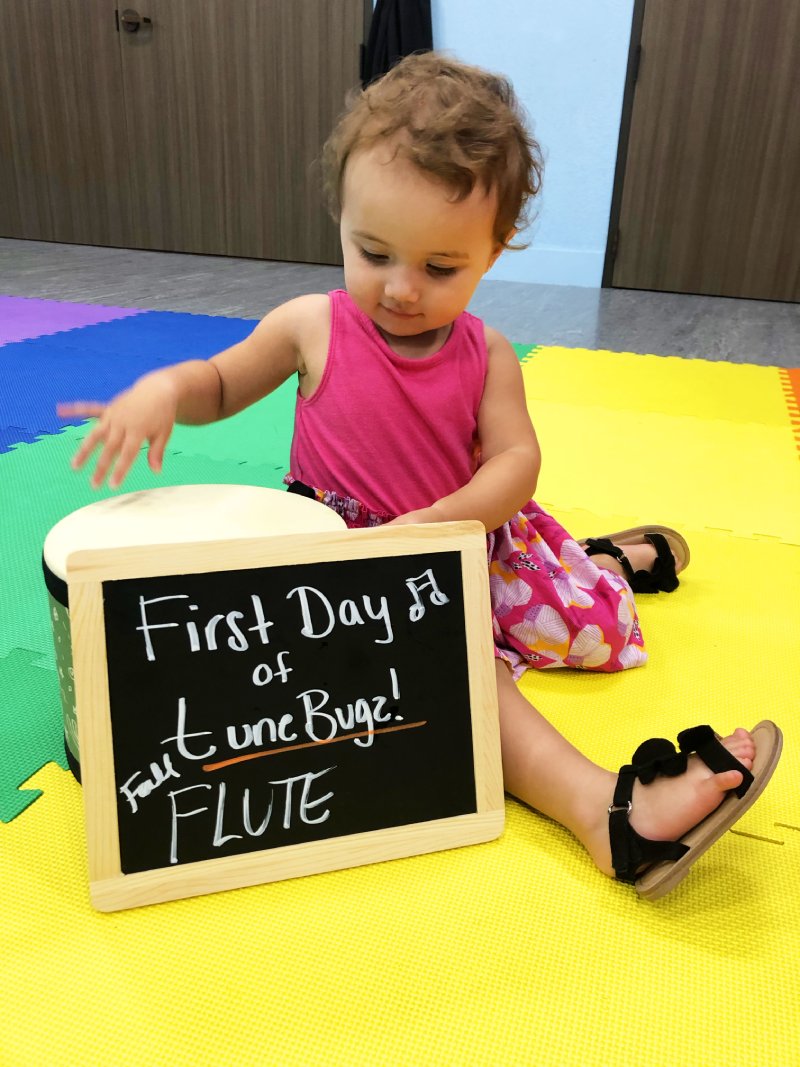
Parents are encouraged to follow the child’s lead once the music gets going; even just by mimicking what the child is doing is tremendous feedback for them. When you do echo sounds or movements back, the child gets a message that what they are doing is worth doing. They want to do things that elicit a response from those they love and this is a beautiful game to play especially with babies and toddlers. One of my great joys is reassuring parents that they can teach their child through modeling even if they don’t feel confident in their singing ability and/or don’t read music or play an instrument. It’s incredibly satisfying to show parents all the ways that parents and caregivers are the best teachers and of course will have the most significant impact on how the child views themselves and their world in general, and this includes attitudes toward music and music making, singing and dancing.
Perceptions about being a musical person can be notched up by parents just simply adding in more musical outings, or creating more opportunities to let music in. Create a “music space” in the child’s play area where they can freely choose to go make music. A simple basket with a few music toys and child focused songbooks is all you need. If they are a bit older you might want to even add a speaker or device they can use to play songs they like to play and sing along to. When they choose to go play music on their own you can view that as an invitation to jump in and play along. Just grab some wooden spoons and plastic bowls and start belting out your best version of Baby Shark – or whatever fun thing is going viral at the time for the littles. These simple acts of musical affirmation have lasting impact and positive and repeated musical experiences when making music with loved ones has special and lasting imprints on the brain. Another thing to remember is that even if you sing the song in the wrong key or you bang out the rhythm at the wrong tempo or even if you don’t know the words, it won’t really matter. What will matter is how authentically and willingly you played with them and how consistently things like these little jam sessions occur over the course of their childhood. How much music is represented in their environment is up to parents, but it also can be easier than you might think. At this stage in their little lives, they believe their parents, and their favorite grown ups are incredibly competent rockstars. And they are 100% correct if you are enjoying the heck out of the process.
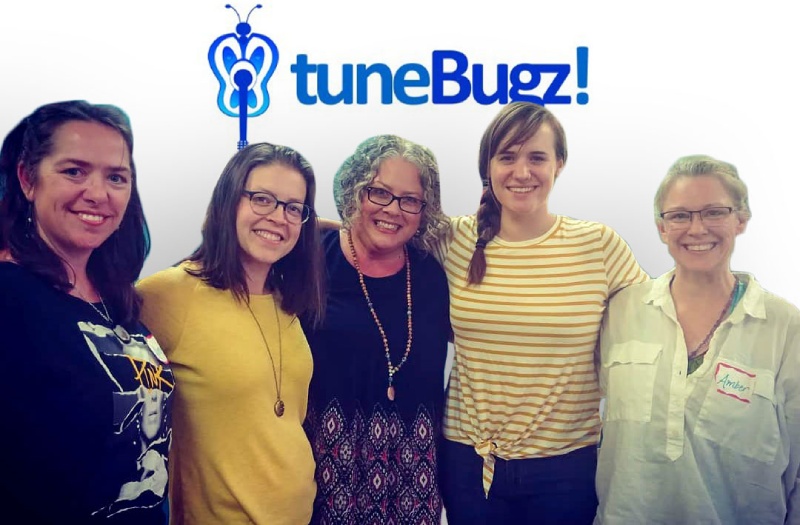
Music in Schools
I started my early childhood music school, tuneBugz! in 2009 amidst the trend of schools slashing fine arts budgets and diverting time and money to high stakes testing. I had wanted to be a music teacher pretty much my whole life so this was really terrible and unfortunate timing. Thankfully, the pendulum is now swinging back and everyone is realizing life without creative expression is without a valve to release pressure on children. Hello STEAM initiatives! There’s a whole host of supportive data to come as large scale studies like the 2017 Kennedy Center’s Changing Education Through the Arts (CETA) Program share their findings and try to reason with legislators and administrators that the benefits of music education in schools are clear and far reaching. The CETA study included sixteen participating schools, more than 400 teachers, and more than 3,000 students and it found that integrating fine arts does in fact close achievement gaps. It also revealed that integrated fine arts classes like music, choir, art and theater create a more positive and cohesive learning environment in schools.
Here are some questions you might ask administrators when looking at early childhood music programs either as pull out programs or fully integrated music programs within schools:
- Is the program research based?
- What music education methods are used?
- How do the the methods align with school and community culture?
- Is the program hands-on and play based? (age appropriate)
- Does the teacher have music education credentials specifically for early childhood?
- How will the school facilitate practice at home? What kind of take home materials are provided?
- Is the music sophisticated?
- Is the music culturally diverse?
I would love to issue you, the reader, a challenge to test some of our musical participation theories with your own kids – no matter what age: make a point this year to commit to the practice of music making at home or with your family. Think of it like part of a wellness routine for you. If you feel lost for ideas on how to initiate, then just grab that leaflet your pediatrician gave you at your child’s last well check and start there. Look at those developmental milestone activities and just add music! It makes those activities way more fun, I promise!
At the minimum, my hope is that you take from this article that babies, toddlers and preschoolers learn in a different way than older children and adults with fully formed brains. Signing up for private music lessons before those little brains can even control their bodies for more than 5 seconds can actually be a big bummer at best and damaging to their perception of music learning at worst. Every child is READY for music learning but before age five or six, the method should fit researched developmental stages. Lots of quality programs will talk about readiness and they don’t want the kiddos before “readiness” being able to sit and pay attention and actively listen and to be able to practice with help from parents. Every child is born with all the seed capacities for music making and much like learning to walk, there’s a predictable sequence or order to things and lots of experimenting in between. Children need space to arrive at the milestones on their own through intrinsic motivation and experimentation and lots of falling down and trying again. You wouldn’t just decide walking is not for them and give up on it. You know they will walk at some point even if it takes six months of trying different things and building up core strength. Add in that they see other people walking all around them and they want in on it so they keep trying because they get messages that this is what they are supposed to do without anyone telling them how wonderful and fulfilling walking is and how they will someday be able to run and jump and even win awards for running. It’s just another thing they are fully and amazingly capable of doing if they want. Music is for everyone.
This article is available and can be accessed in Spanish here.


